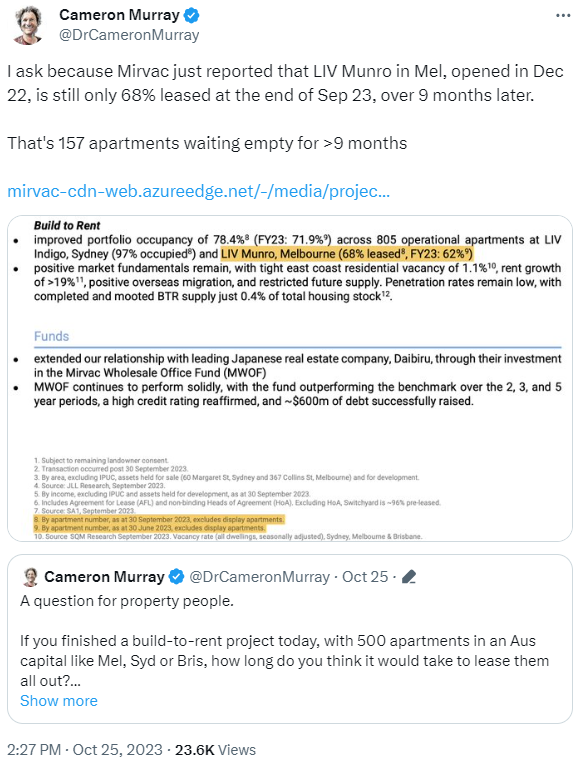One of the reasons why the Albanese Government’s 1.2 million housing target over five years will fail to be met is because it is not in developers’ interests to flood the market with supply because that will reduce their profits.
Instead, private developers have an incentive to drip-feed supply to keep prices high.
Therefore, simply relaxing planning rules with the expectation that developers will suddenly ramp-up housing supply is unlikely to be successful.
Independent economist, Dr Cameron Murray, highlighted this ‘drip-feeding’ of supply with respect to build-to-rent.
Murray noted on Twitter (X) that Mirvac has sat on 157 empty apartments in its LIV Munro development in Melbourne for nine months during the worst rental crisis in living history:

This comes at a time when Melbourne’s rental vacancy rate stands at just 1.2%, according to SQM Research:

This isn’t an isolated example, either. As Murray noted in his UQPPES Statecraft Autumn Lecture last year:
“On the Gold Coast is Australia’s first and largest BTR at the former 2018 Commonwealth Games Athlete’s Village. Despite record tight rental markets, this development of 1,251 dwellings was on a staged release strategy over 3 years”.
“The manager of the project in 2021 told me they “didn’t want to flood the rental market”. Instead, they left hundreds of brand-new homes vacant for years to keep their rents up”.
Property developers will always seek to maximise their profits by drip-feeding supply to drive up prices and rents.
No amount of “planning reform” will change this calculus.

